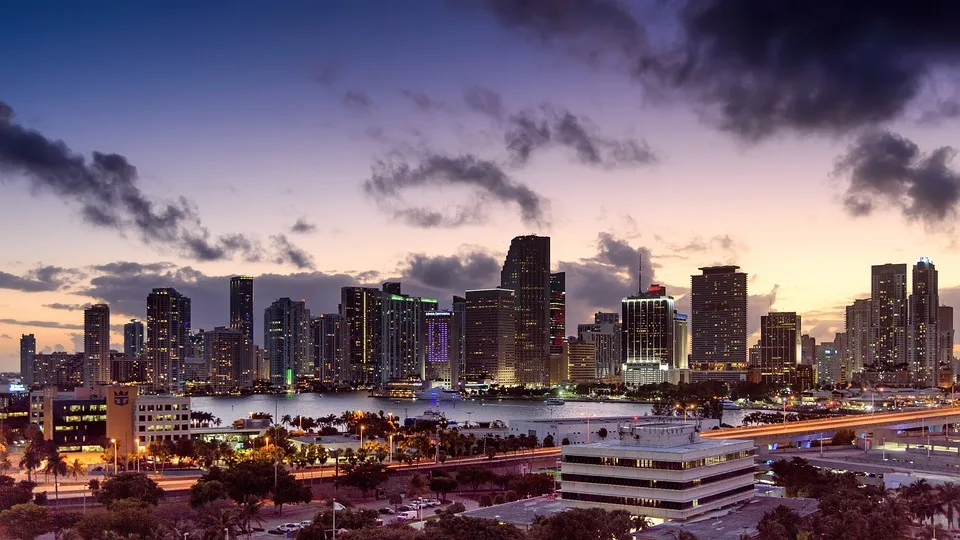Miami’s cruise port has gained worldwide recognition as the Cruise Capital of the World for its bustling atmosphere and vibrant energy.
The city of Miami makes for an excellent destination to spend some time prior to or after your cruise ship sets sail. Between the lush Everglades National Park, Miami Beach, the vibrant streets of Little Havana, the bustling South Beach, and the mesmerizing architectural sites in the historic district, there will never be a dull moment.
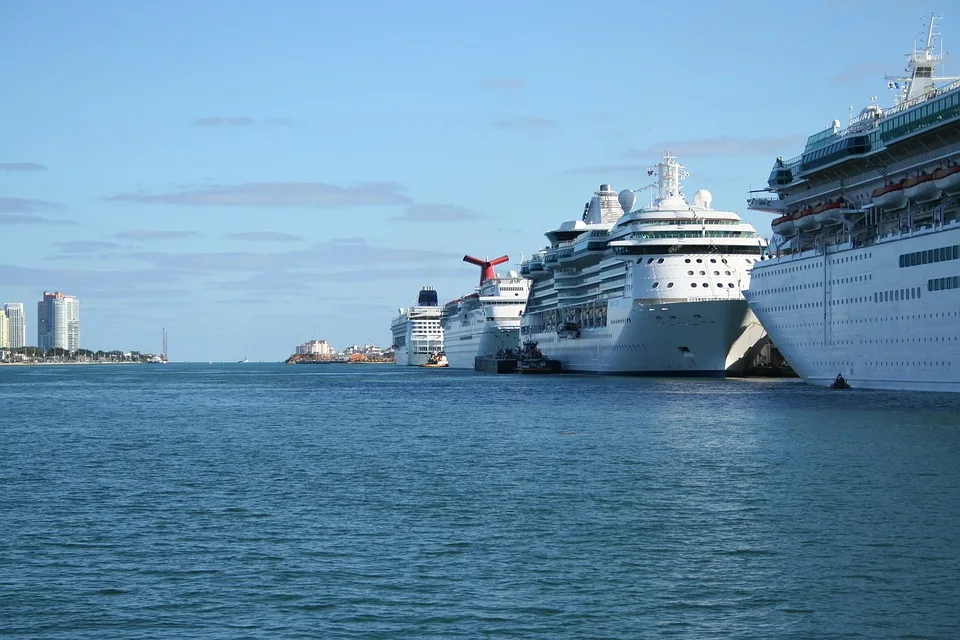
Miami cruise port is within easy reach of Miami International Airport as well as Fort Lauderdale-Hollywood International Airport, making it a hub for cruise ships sailing to incredible destinations like the Caribbean, Mexico, and the Bahamas, among many more.
The port of Miami is also just minutes away from Downtown Miami, so countless cruise passengers often browse these fascinating streets before heading to their cruise ship. You will also find a world of accommodation options and extraordinary eateries near the Port of Miami for those looking to extend their holiday just a bit.
The Port of Miami is home to the biggest cruise terminal in the country, and the port itself is nothing short of astounding. Therefore, it makes sense to learn a little more about the cruise terminal and the amenities you can expect to find there.
Miami cruise terminals are some of the most contemporary cruise terminals you’ll ever come across, which can only be expected of a cruise port that sees more than 6.8 million cruise passengers annually. The Port of Miami plays host to 55 cruise ships from 22 cruise lines every year.
Each Miami cruise terminal features its own parking area, lounges, accessible facilities, port security checks, check-in desks, and thousands of shuttle services, taxis, and cars that continuously deliver excited cruise passengers to their cruise terminals.
In December 2018, the Port of Miami struck an all-time high and broke the world record by accommodating 52 000 passengers in one day.
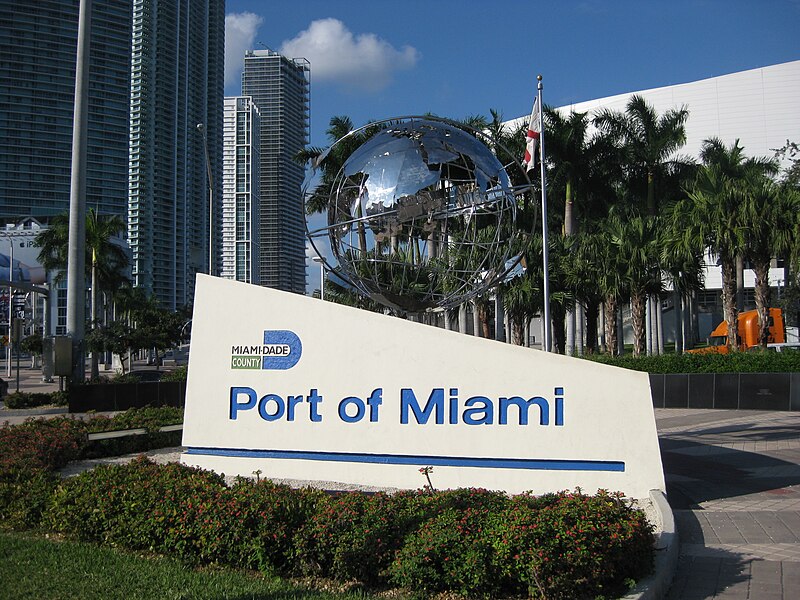
PortMiami Cruise Terminals
All the cruise terminals at the Port of Miami are cleverly constructed for fast and efficient disembarkation and embarkation procedures, and many of them have undergone dramatic refurbishment to ensure the best possible experience for Miami passengers. Drop-off points are located at the front ends of each Miami cruise terminal, along with ample parking garages.
Cruise Terminal A is the home of several Royal Caribbean International cruise ships and is also the largest cruise ship in the entire US. Terminal G hosts a myriad of noteworthy sails of Royal Caribbean, among other cruise lines, making it a recognizable Miami landmark with a distinguished design. The luxurious Terminal J hosts several small ships and luxury cruises.
MSC Cruises used to sail from Terminal F but will be moving on to Terminals AA/AAA by the end of 2023. Carnival Cruise Line has various ships based at Cruise Terminals E, D, and F. Terminals B and C are home to Norwegian Cruise Line ships, and Disney Cruise Line ports at Terminal K. Terminal V is designated for Virgin Voyages.
Below is a list of all the cruise terminals at the Port of Miami, with more expected to make headlines in the future:
- Cruise Terminal A/AAA (designated for MSC Cruises)
- Cruise Terminal A (designated for Royal Caribbean)
- Cruise Terminal B (designated for Norwegian Cruise Line)
- Cruise Terminal C (MSC Cruises and Disney Cruise Line)
- Cruise Terminals D and E (designated to P&O Cruises, Carnival Cruises, Princess Cruises, and Holland America Line)
- Cruise Terminal F (designated to Carnival Cruises)
- Cruise Terminal G (Celebrity Cruises and Royal Caribbean)
- Terminal J (designated for luxury cruises and small cruise ships, including Regent Seven Seas and Oceania Cruises ships)
- Cruise Terminal K (designated to Disney Cruise Line)
- Terminal V (designated to Virgin Voyages)
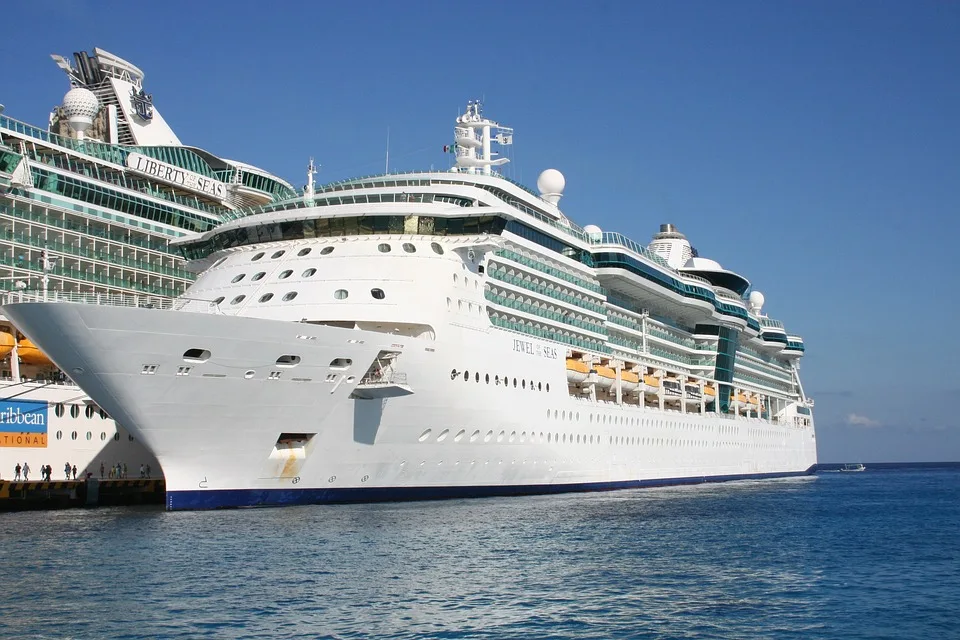
Miami Cruise Terminal AA/AAA
Cruise Terminal AA/AAA recently underwent renovations costing $300 million. The terminal’s two berths both serve MSC Cruises, and the cruise line is responsible for financing, operating, building, and maintaining Terminal AA/AAA as it is the homeport of its future fleet.
In the past, MSC Cruises used Terminal F, but its newly renovated terminal will accommodate two mega-ships, which are strong competitors of the Royal Caribbean International Oasis Class ships, simultaneously. An astounding 28 000 passengers can be handled at this cruise terminal.
Miami Cruise Terminal A (Royal Caribbean Port of Miami)
This astounding cruise terminal measures 170 000 square feet in size and stands as the largest cruise terminal in North America. Cruise Terminal A is the homeport to Royal Caribbean International and is large enough to accommodate the cruise line’s Oasis Class ships. It also provides ample parking for up to a thousand cars.
Cruise Terminal A was coined The Crown of Miami and is operated by Royal Caribbean International in association with Miami-Dade County. The terminal is fit to handle up to two million cruise passengers annually.
Miami Cruise Terminal B
This newly constructed, state-of-the-art terminal plays host to Norwegian Cruise Line ships. Terminal B is known as The Pearl of Miami and measures a remarkable 166 500 square feet in size.
Cruise Terminal B features an open-plan design and accommodates cruise ships with passenger capacities of up to 5000 guests. As a result of extensive construction, the terminal now houses a bar lounge, a waiting lounge, a service area, and a parking garage with valet services on offer.
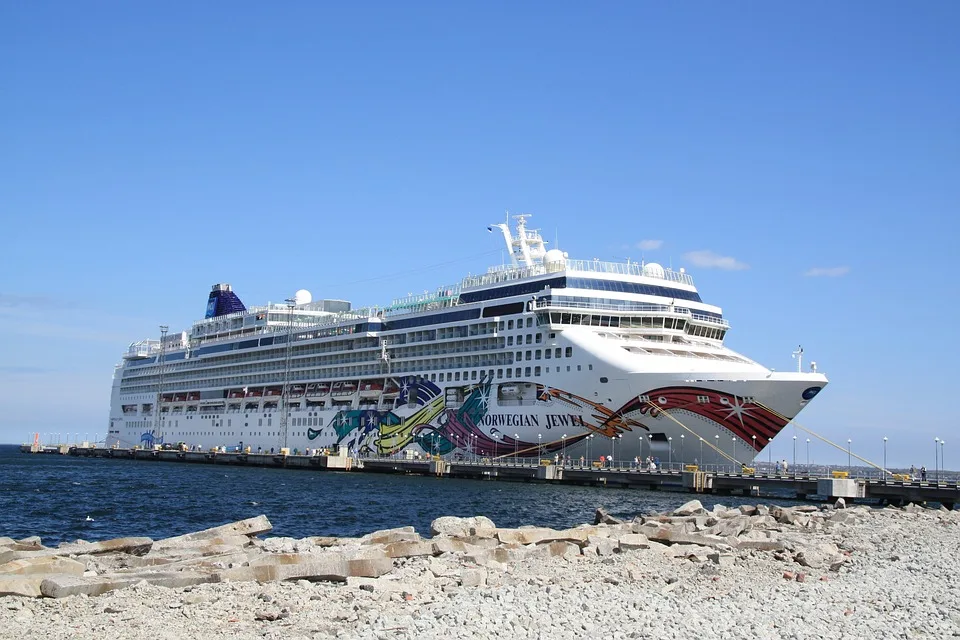
Miami Cruise Terminal C
A section of Cruise Terminal C has been incorporated into Terminal B as a result of recent construction and is eloquently designed to ease the boarding and embarkation processes.
Miami Cruise Terminal D
2013 Renovations resulted in an upgraded and streamlined Terminal D that accommodated Carnival cruise ships. The improvements included constructing new passenger boarding bridges for all the cruise ships.
Terminal D meets LEED Silver standards for being one of the most environmentally-friendly cruise terminals, which cost an estimated $7 million to achieve. This cruise terminal is one among three others that cater to Carnival Cruise Line and spans 105 000 square feet, which includes modern check-in counters, a VIP lounge, a conveyor luggage system, and sophisticated security screening.
Miami Cruise Terminal E
Terminal E was updated in 2018 and caters exclusively to Carnival Cruise Line. This terminal has also achieved the silver standard for its green implementations and co-efficiency and features brand-new boarding bridges that guide passengers directly onto cruise ships.
The parking lot adjacent to Terminal E caters to oversized vehicles, although parking rates may apply.
Miami Cruise Terminal F
Terminal F used to serve MSC Cruises exclusively but has recently been upgraded to cater to the Excel Class ships of Carnival Cruise Line, which accommodate up to 7000 guests.
This contemporary cruise terminal uses advanced facial recognition software to exhilarate the boarding process, and its immense Seaport Passengers Boarding bridges cater to larger cruise ships. The estimated cost of all the implemented upgrades stands at $170 million.
Miami Cruise Terminal G
The iconic roofline of Terminal G is one of the most noteworthy landmarks in Miami. The cruise terminal currently serves both Celebrity Cruises and Royal Caribbean cruises, among a few other cruise lines. The estimated cost of renovations is $2 million.
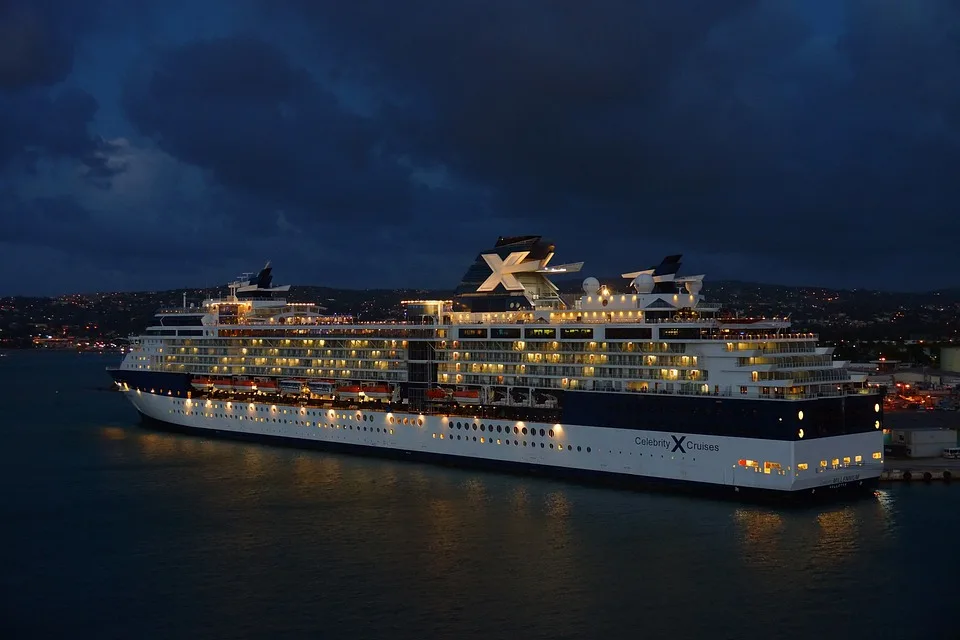
Miami Cruise Terminal J
Terminal J functions under the authority of Regent Seven Seas and Oceania cruises and caters to more luxurious ships and smaller vessels, such as those of Crystal Cruises and Azamara Cruises. The new renovations, including ground-floor restrooms and an exterior escalator, cost around $3 million.
Cruise Terminal J currently offers Customs and Border Protections services and specializes in high-end cruises, as it involves a great deal of personalization.
Miami Cruise Terminal K
This cruise terminal is newly approved and houses some of the newer ships of Disney Cruise Line, which are LNG-powered. Terminal K sits on the south of the Port of Miami and serves large cruise ships with passenger capacities of up to 3500. Plans for renovations include making the ship channel and the turning basin wider.
Miami Cruise Terminal V
Terminal V, the former Terminal H, is a magnificent terminal that exclusively serves Virgin Voyages across its 10 000 square feet tropical-inspired area.
The estimated cost of renovations is $180 million, and the terminal sits on the northwestern side of the Port of Miami.

How to Get to Miami Cruise Port
The Port of Miami is located on Dodge Island, nestled in Biscayne Bay, a short while away from the Atlantic Ocean. In addition to cruise ships, the Port of Miami also handles an immense amount of containers and cargo.
The Miami cruise terminals are located approximately eight miles from Miami International Airport, and Fort Lauderdale International Airport is approximately 25 miles away. Cars must enter the Port of Miami by driving down Biscayne boulevard and the Port Bridge. Cruise terminals A, B, C, D, E, F, and G are located at the northern end of Dodge Island, whereas terminals H and V are set on the west, and Terminal J and terminal F can be found on the southern end of the island.
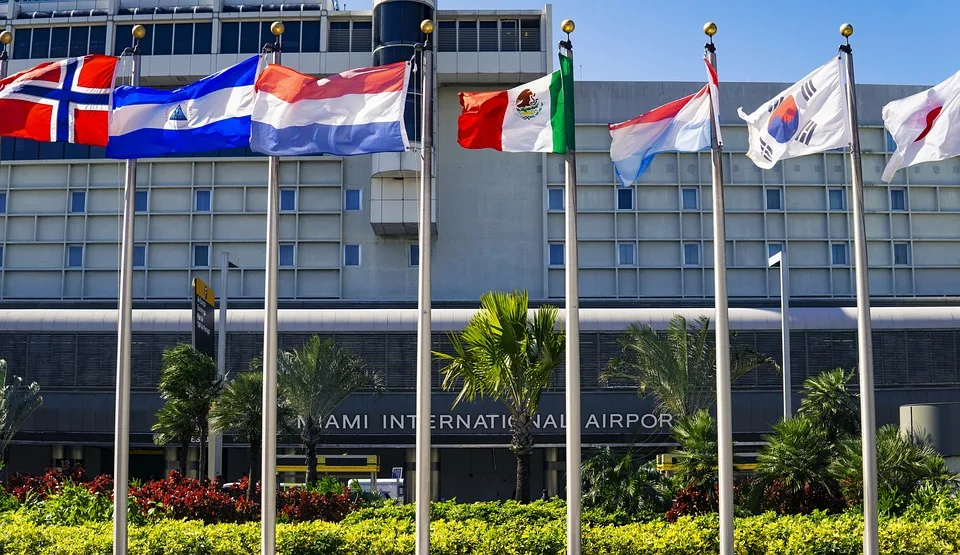
Driving Directions to The Port of Miami
If you’re on your way to the Port of Miami via car, you can enter this address into your GPS:
1015 North America Way
Miami
Florida
33132
There will be signs lining the streets that will lead you to the cruise terminal parking you’re looking for. The parking lots are all located near the cruise terminals.
Traveling from Miami International Airport Driving Directions
You can expect to spend around 20 minutes driving from Miami International Airport to the Port of Miami.
If you’re driving via the port tunnel, take the FL-836 E from Miad Cir in Miami. Stay on FL-836 E and continue onto I-395 E. Stay in the right lane and take the exit to MacArthur Causeway. Take the exit to Miami Beach. Continue driving on the Port of Miami Tunnel and make a left onto Port Boulevard. Continue driving in the left-hand lane to turn off at Panama Way and take another left onto N Cruise Boulevard. Turn left again and drive at Europe Way, where signs will guide you to the pier terminal you’re looking for.
When flying to Miami, passengers have the option of booking a shuttle service with their cruise line to get to the Port of Miami from Miami Airport. Express Shuttle is a popular shuttle service that accepts group bookings in advance.
As it is only a short while away, passengers can easily get to the Port of Miami with an Uber or a taxi service.
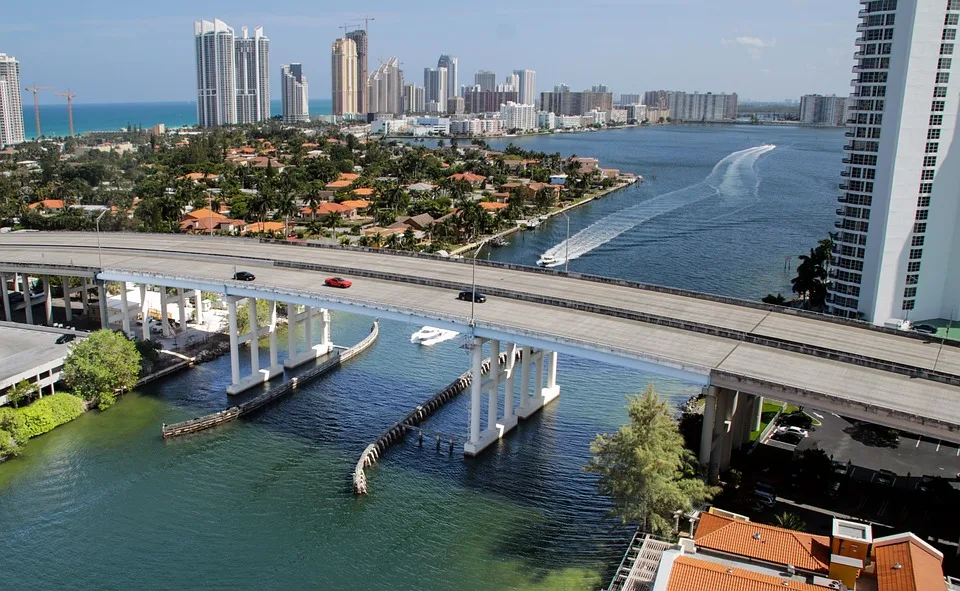
Traveling from Fort Lauderdale/Hollywood International Airport Driving Directions
You can expect to spend around 45 minutes driving from Fort Lauderdale/Hollywood International Airport to the Port of Miami.
In Dania Beach, drive onto I-95 S from Perimeter Road and Griffin Road. Proceed straight on the I-95 S to the Port Miami Tunnel. Stay in the left-hand lane and take the 2D exit to get to I395 E (Miami beach).
Merge onto MacArthur Causeway before taking the exit to Miami Beach toward the Port of Miami Tunnel. Once you reach the Port of Miami entrance, signs will guide you to the pier terminal you seek.

Using Public Transportation to get to The Port of Miami
There are various public transportation options that will get you to the Port of Miami. The Orange Line of the Metrorail travels to the Port of Miami from Downtown Miami. From the Government Center Metrorail Station, you must transfer onto the Metromover of the City of Miami Coral Way Trolley.
There is an app called the Go Miami-Dade Transit that helps travelers plan their trip to the Port of Miami via train, bus, or car from wherever they are in Miami.
Virgin Trains USA connects Fort Lauderdale, Orlando, International Airport, and West Palm Beach to Miami. In Downtown Miami, there are express trains that go to Virgin MiamiCentral.
From Richmond, New York City, Orlando, and Washington, among other large cities, Amtrak train services travel to Miami Station, which allows you access to the TriRail Transfer Station.

More About Miami for Cruise Passengers
You’ll find an extensive public transport system in the City of Miami, making it easy to explore all its significant attractions without a car. Visitors can walk to Downtown Miami and Miami beach effortlessly, guaranteeing a great day before or after your cruise.
The vibrant area of Downtown Miami is riddled with amazing shops and eateries. Shopaholics will have a ball, while culture enthusiasts can frequent all the excellent theaters in this brimming part of the city.
Little Havana boasts a world of Cuban-inspired attractions, while Coconut Grove features plenty of historic sites, luxury hotels, and fine dining establishments.
If you’re looking to work on your tan, Miami beach is the place to be. Sitting on the east of Downtown Miami, this renowned beach is one of the most beautiful locations on the shores of the Atlantic Ocean and features white sandy beaches, seafront resorts, and the multicolor South Beach.
